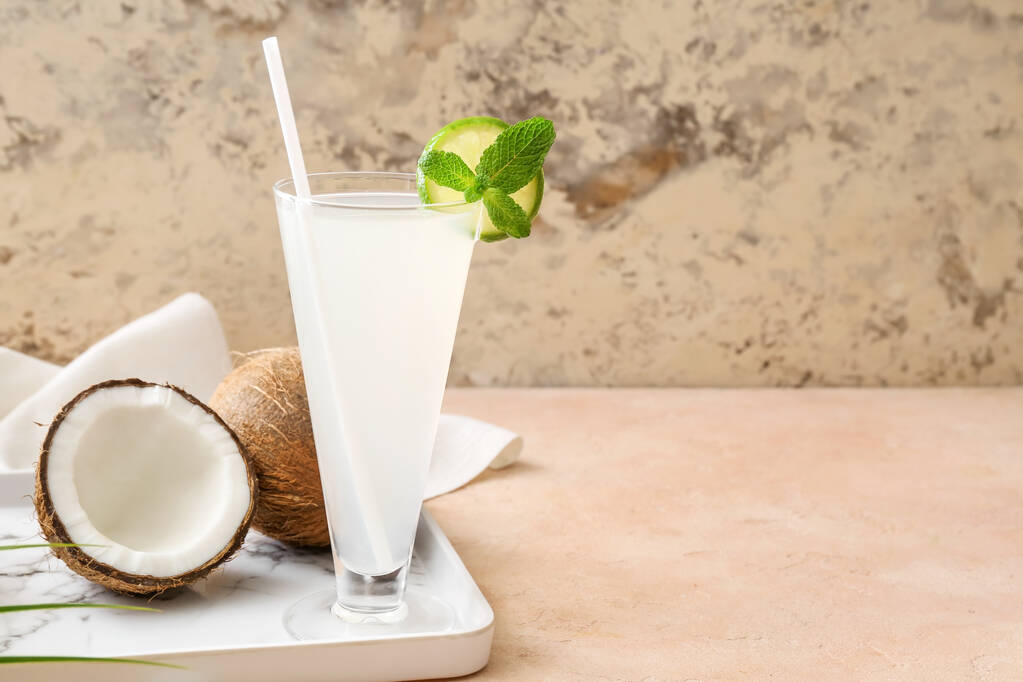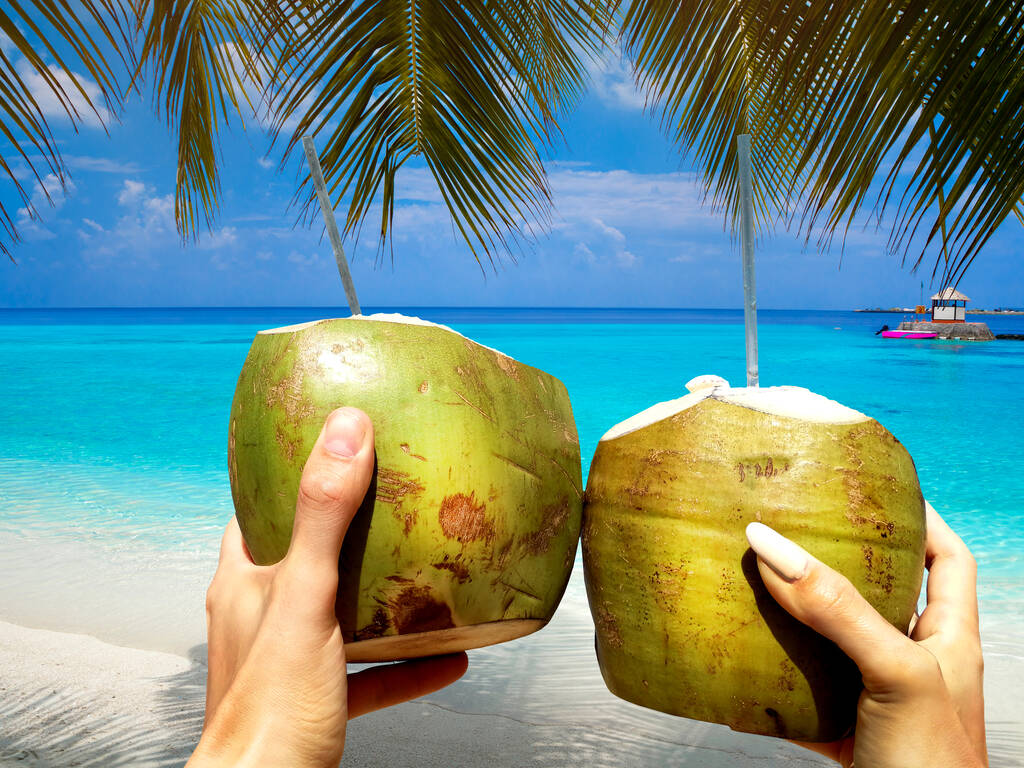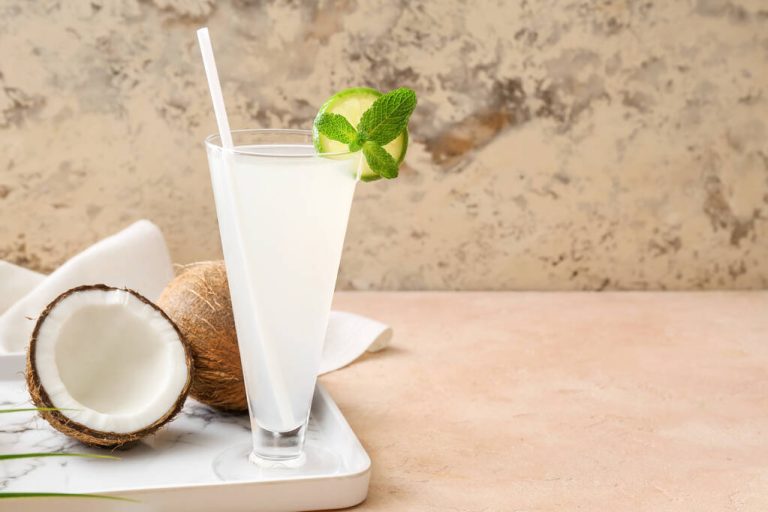Coconut water is the new in drink for athletes, figure-conscious people and friends of healthy eating. But what about the new super drink, is coconut water really that healthy? A fact check.
Stars and starlets are seen with the new fitness drink and supposedly can no longer do without coconut water when exercising. The super drink appears as a natural variant of isotonic sports drinks full of minerals, does not contain many calories and has a long tradition as a regionally available soft drink in the countries of origin of the coconut.
What sounds very good at first glance has a few small snags at second glance.

1. Coconut water doesn’t taste like coconut.
Coconut water should not be confused with coconut milk, which has long been known in this country. This is very fatty, is obtained from the flesh of ripe coconuts and plays a central role in Asian and Caribbean cuisine.
In contrast, coconut water is obtained from the unripe, still green coconut. To do this, a hole is drilled into the nut and the liquid in it, i.e. the coconut water, is sucked out. In Southeast Asia or the Caribbean, often just a straw is put through the opening and the coconut liquid is drunk directly from the green fruit.
Like water, coconut water is also a clear to slightly cloudy liquid that tastes only very slightly half-sour, half-sweet – but without the typical coconut note. As is well known, one can argue about taste, but I bet: ginger water or homemade lemonades taste better.
2. Nutritional values & calories: Coconut water does not make you slim.
The drink made from the coconut is said to be better than any sports drink in terms of mineral content.
Well, that’s not entirely true. In fact, coconut water is very high in potassium, which is heavily lost through sweating and needs to be replaced. And the sodium, calcium and magnesium content is also considerable and roughly corresponds to that of mineral water.
Proteins and vitamins, on the other hand, are hardly included. As an untreated natural product, the energy content of coconut water fluctuates between 15 and 20 kcal per 100 ml – for a sports drink it makes sense to supply energy while you are exercising. It makes less sense as a wellness drink if you don’t really do sports.
Because of its calorie content, the coconut drink is only suitable as a slimming product to a limited extent: one liter of the liquid corresponds to 200 kcal. Lost electrolytes can be replaced with good mineral water to save calories.
It has not yet been possible to prove that coconut water stimulates the metabolism. Coconut water is not a “slimming agent”. A 2016 study found no significant differences for measured physiological variables, including rehydration during exercise.
3. Health: Coconut water is overhyped.
There are many claims about the health-promoting effects of water.
Coconut water is said to stimulate the metabolism,
help with detoxification
promote cell renewal
calm the stomach and
help against high blood pressure and heart disease.
However, these claims are not or not sufficiently supported by studies. A positive effect on health may exist, but it has not been proven.
However, the very digestible coconut water is not directly harmful, not even for small children. And compared to an artificially concocted “isotonic drink,” it may be a better choice, especially if it’s organic. However, coconut water does harm us indirectly – through its ecological footprint (see 5.).
4. Buy: Coconut water is very expensive.
Thanks to the hype, coconut water is now available on practically every corner. Whether in the supermarket, health food store, health food store, drugstore, discounter, online shop or Asian store – water can almost always be found on the shelves in different flavors. You should only ever buy organic products.
However, the natural thirst quencher is quite expensive: you pay around 1.80 euros for around 300 ml. In view of the low health effects (see above) and the problems of sustainability (see below), however, one should think twice about simply spending the money on regional and seasonal fruit and vegetables. Contains just as many nutrients, but costs less – and creates less waste.

5. The life cycle assessment of coconut water: not great
Coconuts only grow in distant regions of the world. They therefore have long transport routes behind them when they arrive in Germany, leaving a large ecological footprint. If you first transport the nuts to the factories to obtain the coconut water and then to Germany as a finished product, the balance is even worse. Each tetrapak of coconut water not only comes with a tetrapak to throw away, but also a gas bill for shipping.
In other words, coconut water is a fairly superfluous wellness product.
The fact that it is sold almost everywhere as an organic product does not change that. Yes: Organic is the content. But the small plastic bottles and tetra packs, mostly with a content of only about 300 ml, cause the mountains of rubbish to grow, with or without organic, and it doesn’t help the environment that organic goods have to be carted here from the other end of the world (as long as we don’t do consistently with regenerative energies).
We don’t want to spoil anyone’s occasional enjoyment of a coconut drink. However, coconut water is only ecologically harmless in one way: sipped directly from the tree from the nut. In our latitudes, however, it is nonsensical to the point of being environmentally harmful to buy and drink the coconut drink – even if it is organic.

